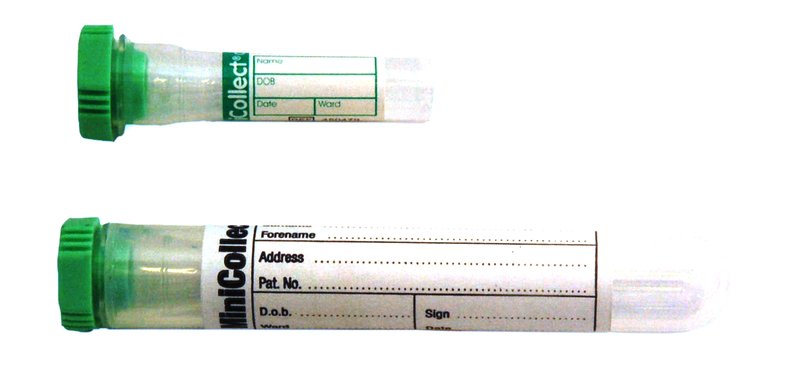Vitamin E (Alpha-tocopherol)
Chemical Pathology
Notes
- Vitamin E is a fat soluble vitamin with powerful antioxidant properties.
- In the UK most individuals are well nourished. Vitamin E deficiency is confined to those individuals with malabsorption, due to small intestinal disease or pancreatic insufficiency, e.g. cystic fibrosis or alcoholic and biliary cirrhosis, short bowel syndrome.
- Deficiency of vitamin E may lead to varying degrees of neurologic deficits.
- As vitamin E is transported bound to lipoproteins, deficiency can also be seen in various lipoprotein disorders e.g. abetalipoproteinaemia.
- Vitamin E levels can be low in infection due to the acute phase response (consider checking CRP).
- Vitamin E toxicity is rare and usually associated with excess supplements.
Sample requirements
For adults, a minimum of 1mL blood taken into a 6mL lithium heparin tube

For children, a minimum of 1mL blood taken into a 2mL lithium heparin tube

For neonates, one full 0.8mL minicollect lithium heparin tube

Storage/transport
Do not store. Send at ambient temperature to the laboratory on the day of collection.
Required information
Relevant clinical details including the reason for the request.
Turnaround times
Samples are referred to an external laboratory for analysis, with results expected back within 3 weeks.
Reference ranges
| Age (years) | Vitamin E (µmol/L) |
|---|---|
| <1 | 11.5-24.4 |
| 1-6 | 7.0-21.0 |
| 7-12 | 10.0-21.0 |
| 13-19 | 13.0-24.0 |
| 20+ | 9.5-41.5 |